Taylor Houlihan Recreates 3.2 Million-Year-Old Skeleton
The U-M Museum of Natural History reopened to the public on Sunday, April 14, 2019. Originally housed in the A.G. Ruthven Museums building from 1928 until January 2018, the museum now occupies the brand new Biological Sciences Building at 1105 N. University Avenue.
Alongside new exhibition spaces to share with the public, the museum also debuted new additions to the permanent collection, including a replica of the original skeleton of Lucy, Australopithecus afarensis, a 3.2 million-year-old hominid found in Ethiopia in 1974 by Donald Johanson and Tom Gray.
During her time as a student, Stamps alum Taylor Houlihan (BFA ‘18) worked on a year-long project at the department of paleontology lab with Dr. William Sanders, chef vertebrate preparator at the University of Michigan Museum of Paleontology, casting and painting the skeleton of Lucy.
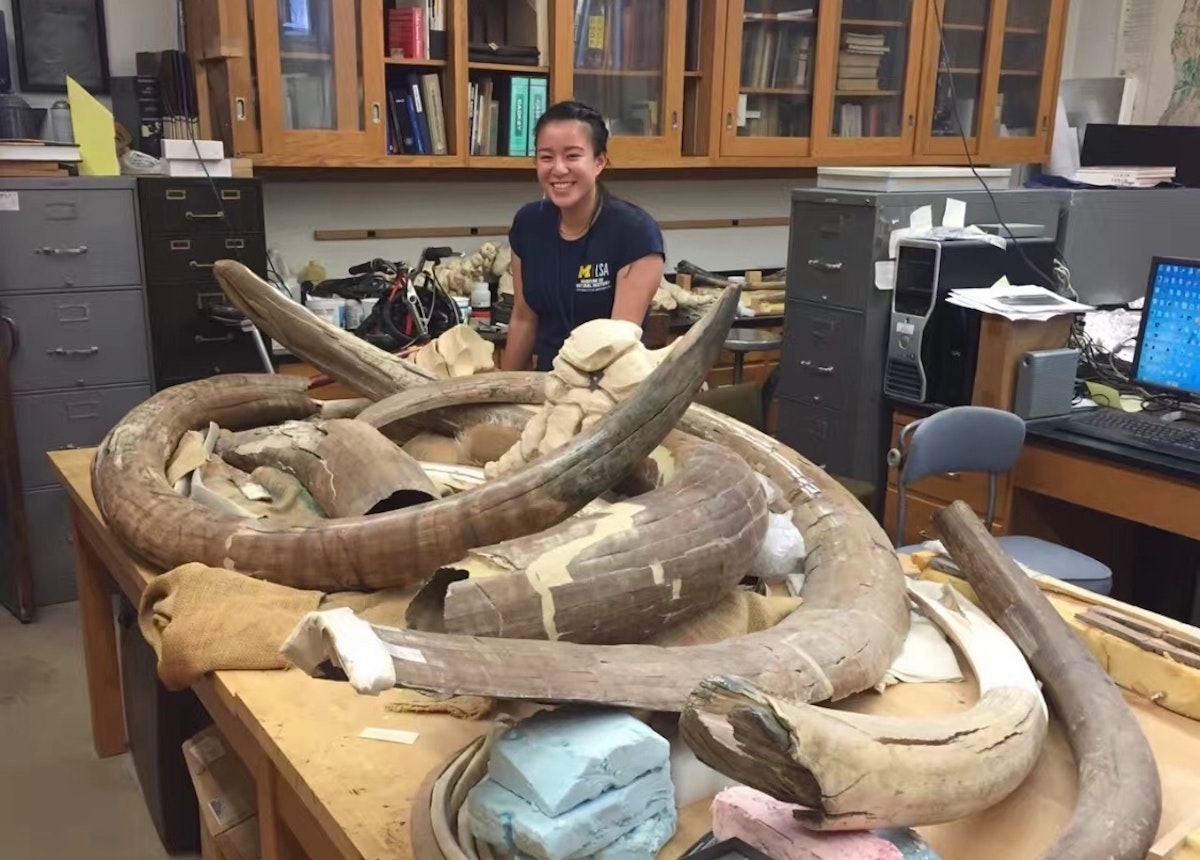
Stamps caught up with Houlihan to learn more about her work with the museum and the process of fabricating Lucy.
Tell us how you became involved with the U-M Museum of Natural History.
I became a docent my junior year for two main reasons: I wanted to expand my bubble outside of the art school, and I was interested in the intersection between art and natural history. For example, artists that fit in that spectrum are John James Audubon, Damien Hirst, and Nori Oxman. As a docent, I gave hour long tours about dinosaurs and evolution. I also hosted demos like the possibility of life on Mars and water polarity.
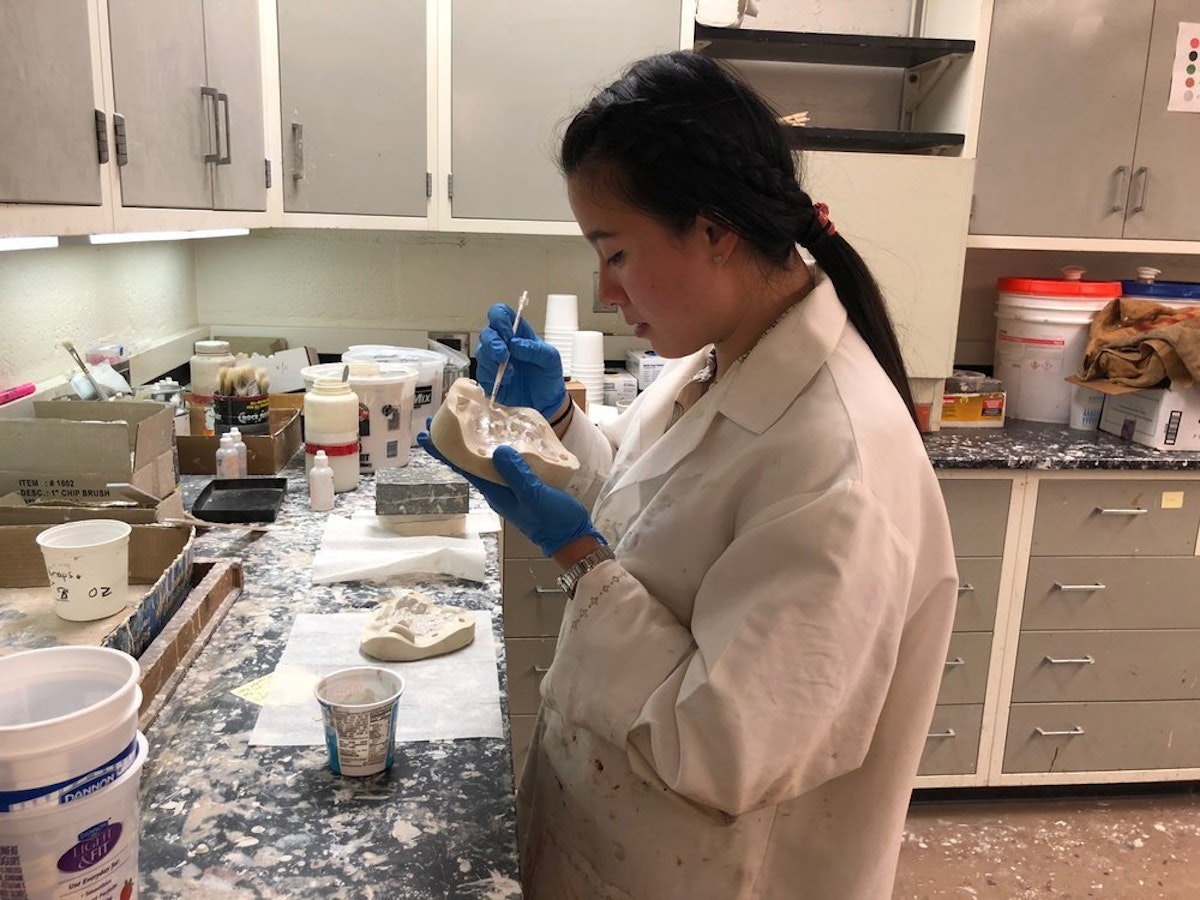
How did the opportunity to work with Dr. William Sanders come about?
Two summers ago, I was working shifts in the rotunda of the old natural history museum showcasing hands-on items guests could view when they entered. During my three-hour-long shifts, I started asking researchers and other people who worked in the lab about their work. One individual who studied mammoth tusks showed me his workspace with massive mammoth tusks nonchalantly resting on a 2 x 8 wooden desk. My positive interactions with those people made me realize that, as an art student, I would rather be involved in fabricating exhibits than giving tours of them.
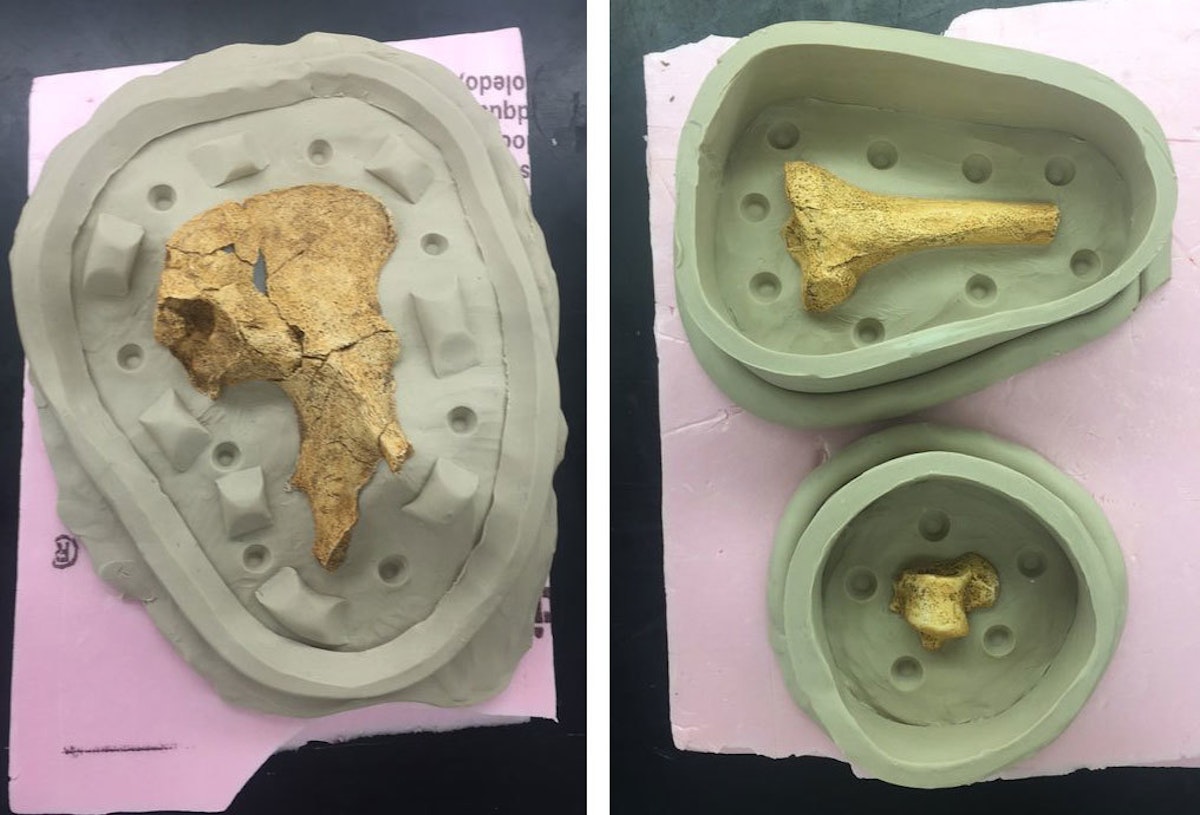
I asked around about who I should get in touch with in order to work in the prep lab and everyone told me to contact Dr. Sanders. I recall being extremely nervous to pursue this opportunity since I had no previous experience working in a lab. Nevertheless, I expressed my eagerness to create great work. This opportunity was not advertised through any University of Michigan student job board, rather Dr. Sanders explained to me later that he relied on motivated students to stumble upon his lab. A couple weeks after my training, Dr. Sanders informed me that I would be working on the Lucy project. I remember feeling mixture of disbelief and delight since I did not expect to be trusted to work on such a captivating specimen so soon.
Talk us through the process of fabrication for the Lucy project.
The end goal of the project was to produce four full casts of her skeleton: one for display, one to send to another university, and two student sets. The process involved casting every individual bone, trimming the edges, and painting one detailed set for display. In contrast to the digital work I was creating at Stamps, I was employing a traditional method of making casts mixing poly-talc resin for molding, creating mother molds, and hand painting the bones with acrylic paint.
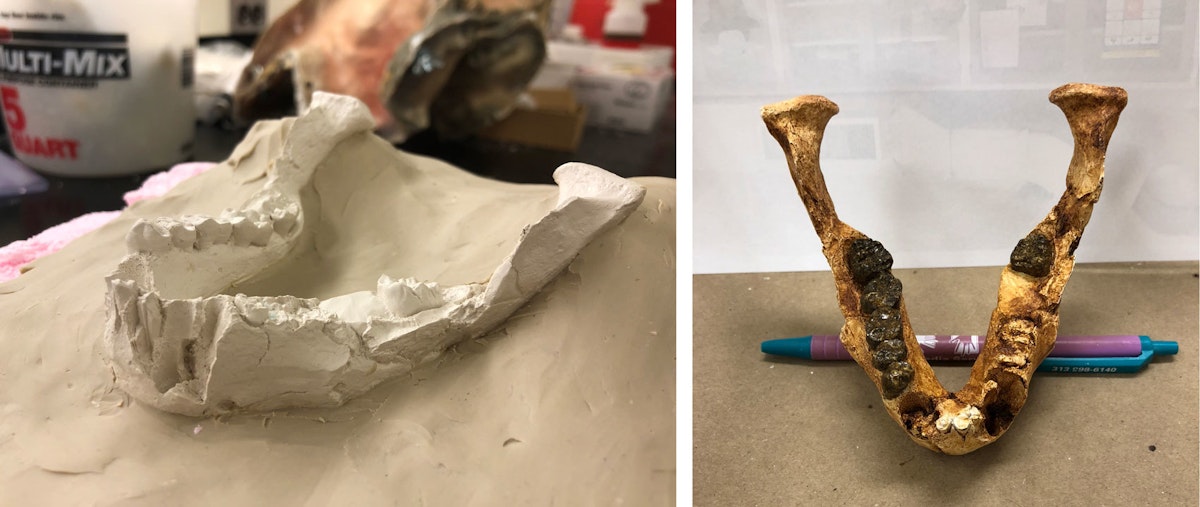
I made plenty of mistakes in the lab and Dr. Sanders kindly let me know when I put too much catalyst or did not close of molds correctly. However, I did not allow my errors to hinder my progress. At my time at Stamps, I learned to receive constructive feedback, strive for accuracy, and to work towards a beautiful product. With these tools in addition to attention to craft, I was able to apply what I learned in the classroom towards to piece that would be on permanent collection.
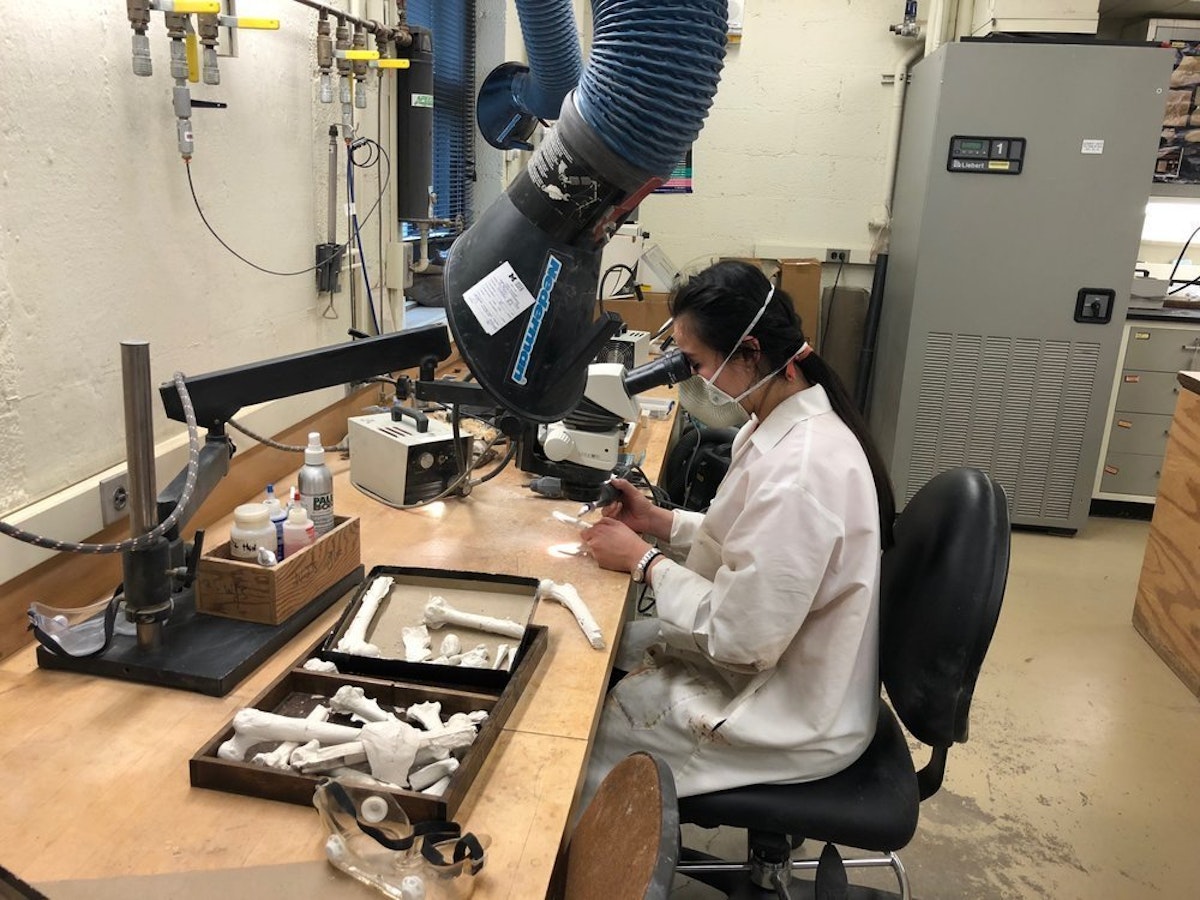
What do you hope visitors to the exhibition take away from it?
The discovery of Lucy is extraordinary because she gives us a better picture of our process of evolution. She is a full grown adult female and the most complete specimen of an early human relative. It’s possible even one of our direct ancestors. Lucy probably spent a lot of time in trees, but also walk upright, just like us. I hope visitors walk away with a sense of curiosity about Lucy’s life and what the world looked like when she was alive.
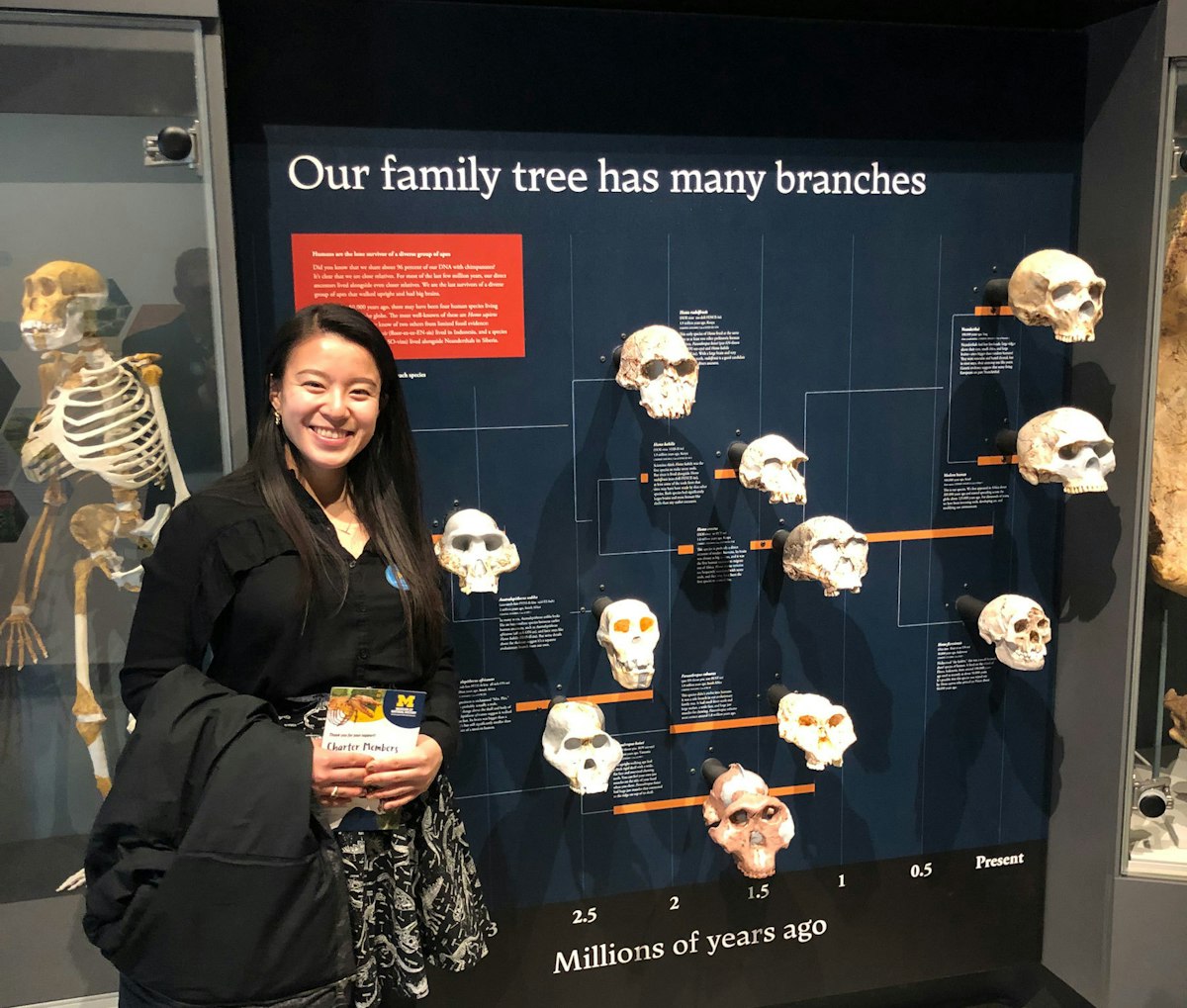
What are you doing now, in your post-college career?
I currently work full time in Baltimore, MD as a Digital Modeler at Direct Dimensions. I perform 3D imaging and scanning of various artifacts, focusing predominantly on artistic fabrication and cultural conservation, using a variety of techniques hardware and software. Imaging techniques include photogrammetry, structured light scanning, laser scanning, with post processing on multiple software tools.

I recently worked on a off-site project in the US State Department, 3D scanning historically significant objects out of their collection of American fine and decorative art between the years of 1750-1825. Objects included Thomas Jefferson’s writing box and a 1780s Chinese punch bowl. The end product will be excellent 3D renders to disseminate to the public. Once uploaded to sketchfab, a 3D model platform, people will be able to interact with some of the objects and take curated virtual tours too.
Learn more at Taylor Houlihan’s blog and art instagram account.